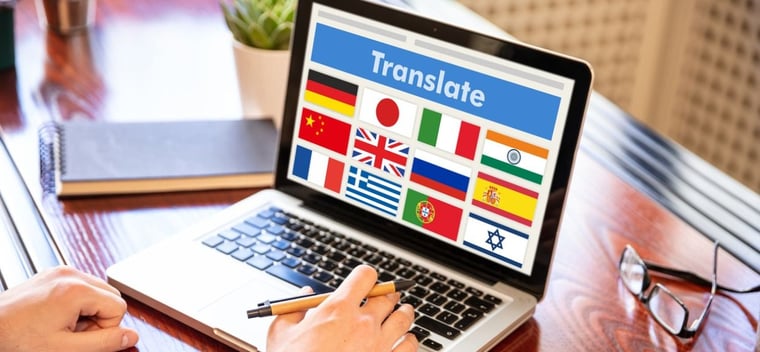When you enter new markets and seek out new customers in foreign languages and locations, having accurate translation is not a nice-to-have, it’s a must-have. And actually, most enterprising businesses understand this and don’t dispute it.
The question then is - how do you know what high-quality language translation looks like? After all, it’s in another language, and no supplier is going to hand it to you and say, “Here’s your content, but we didn’t do a very good job of the translation, good luck with it.”
At LinguaLinx, we see a huge range of quality in translated text. Often, we’re called on to help fix the lower-quality text, which pretty much means starting from scratch. This means our customers wasted their money before coming to us.
But then, we’re a Language Service Provider (LSP), and it’s our job to recognize great translation when we see it. This is the level that we work to achieve.
But you’re not in the Language Services industry, so in this article, we’ll go through a few things you should look for to recognize high-quality in your translated content.
6 Signs of High-Quality Language Translations
1. Is The Translation Grammatically Correct?
Are the sentences punctuated properly? Even if you don’t understand French yourself, you can look through French text and spot when the beginning of a sentence, or the name of a city, isn’t capitalized.
These little things (well, they’re not little) can signify poor attention to detail. Because really, if the grammar in this article was poor to this point, would you trust the information and keep reading?
2. What Professional Qualifications Should You Look For?
What are the qualifications of the linguists working on your project? It’s not rude to ask, and a suitable LSP will be used to readily give out this information.
So what qualifications are you looking for? The LSP itself should have an ISO-17100 qualification. This is the top international translation services qualification. It means they’re audited annually and have to conform to their processes.
And what about the linguists they use? They should have a degree or a postgraduate qualification in translation. Preferably, they should also be a member of a trade body such as the American Translators Association (ATA).
3. What Is The Translator’s Experience?
The translators chosen for your project shouldn’t just be totally proficient in the source and target languages; they should also have experience working in your industry.
Every industry has its own way of communicating internally and externally. Your translation should reflect this and pay attention to the nuances. So, even if you can’t read it yourself, if you know it’s had people with experience in your field involved, the translation will be stronger and more accurate.
4. Is The Terminology Consistent?
Different linguists will use different phrases to relay an accurate message in the source language. There’s no one right way to do it, and everyone has their own preferences.
But if your business has a term bank or glossary, then some terms need to be strictly adhered to. This is because the company has decided that using these words or phrases in a specific way benefits the brand or may even have to be used for legal reasons.
5. What Quality Assurance (QA) Process Did It Go Through?
Once again, you can ask the question, and there should be no red cheeks or hesitation in telling you the exact QA process your translation went through.
This should include translations being double-checked independently by other linguists. This ensures that not only is the translated content correct, but that it’s true to the tone of your message and uses the language of your industry.
Really, you want your LSP to have an ASTM F2575-06 qualification which is the standard guide for quality assurance in translation.
6. Finally, What Was The Process Like?
Did they hit all their project deadlines? Did they communicate things clearly? Did you always feel you could ask any questions you liked and know the conversation wasn’t going to be uncomfortable?
In other words, were they professional, courteous, and understanding that getting work translated into a foreign language can be daunting for a customer?
In essence, you’re taking the message that you’ve cultivated for years, putting a blindfold on (you don’t speak the language), and asking a stranger to take your hand and guide you through the forest.
Our advice - make sure they’re not a stranger, but an extension of your team.
Good translation includes a great customer experience. You may think that as long as the source content is translated well, that’s all that matters. But it isn’t.
You should be able to partner with an LSP that will do a good job and make your life easier.
Discover the Perfect Translation Solution
Considering a translation venture? Let's discuss your vision.
Our consultations are complimentary, with zero commitment.
With LinguaLinx by your side, the essence of your message remains intact through every translation. Rest assured with our ISO 17100 and ISO 9001 certifications, two decades of expertise in the translation field, and the trust we've established with numerous organizations.







